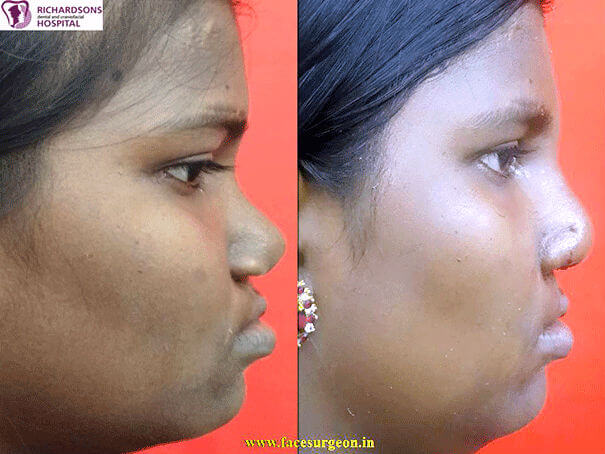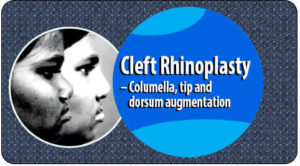Cleft Rhinoplasty – Columella, tip and dorsum augmentation
Rhinoplasty for Cleft lip and palate patients
Patients affected by cleft rhinoplasty have an overall disfigurement of the face. One of the reasons for this is the associated nasal deformity found in cleft patients. The various changes seen in the nasal structure of cleft patients include the twisted nose, a wide nasal base, flared nostrils, poor tip projection, and short nasal length. Lack of midline alignment of structures is common in these patients. The lower lateral cartilages in the cleft patients are displaced on the cleft side that results in lack of support for tip projection and columellar skin envelope are shortened. The surgical corrections for these patients usually occur at two or three different time intervals. In early infancy, adjustments of the lower lateral cartilages occur in along with the cleft lip repair. There is a significant distortion of the nasal tip’s shape between the age of 5 and 8 years, so the secondary correction for adjustment of the lower lateral cartilages is done at this stage. The final correction occurs when the patient is between 12 and 15 years of age. By this age, the nose would have reached its nearly adult shape. The number of corrections depends upon the severity of deformities the patient has.
Usually, patients with bilateral defects require three corrections whereas the patients with unilateral defects require two corrections. The final corrective procedures are done through an open approach. The lower lateral cartilages must be carefully visualized. Septal abnormalities are corrected. Following the correction of septal abnormalities, any required adjustments in the nasal dorsum are done.

Septal cartilage can be obtained for use during a reconstruction of the nose for using as a strut graft to provide support. Other sources of graft material are the rib, ear, skull, and pubic region. The incisions placed for the rhinoplasty procedures are closed with fine sutures and splints, pressure dressings are placed to ensure the correct shape of the nose and to minimize swelling. Patients are closely monitored for a period of one week before they are discharged. The results become evident after the dissolution of edema. All types of cleft surgeries including cleft lip and palate repair, speech therapy, speech surgeries, cosmetic procedures including scar revisions, rhinoplasty, and orthognathic surgeries to correct jaw deformities are being done at Richardson’s dental & craniofacial hospital by Dr. Sunil Richardson and his team.

